New Approaches and Alternatives for Toxicity Testing: Session I - Toxicity Testing Strategies and Model Systems
Sponsored by: NIEHS Superfund Research Program
Archived: Monday, May 14, 2018
The NIEHS Superfund Research Program (SRP) is hosting a Risk eLearning webinar series highlighting research that may be useful as new approaches and methodologies for evaluating the safety of chemicals. This series coincides with recent initiatives found in the U.S. Environmental Protection Agency New Draft Strategic Plan and the National Toxicology Program (NTP) Strategic Roadmap.
In the first session, speakers will provide an overview of toxicity testing strategies to advance the use of 21st-century science in chemical safety evaluation. Speakers will also describe the pros and cons of model systems, such as zebrafish and cell-based assays, in hazard identification.
Nicole Kleinstreuer, Ph.D., deputy director of the NTP Interagency Center for the Evaluation of Alternative Toxicological Methods (NICEATM), will discuss the NTP Strategic Roadmap for incorporating new human-relevant approaches into safety testing of chemicals and medical products in the United States. The interagency coordinating committee for the validation of alternative methods (ICCVAM), consisting of representatives from 16 federal agencies, recently developed and published the strategic roadmap with input from a broad range of stakeholder groups. The successful implementation of the roadmap will require coordinated efforts that address three strategic goals: 1) Connecting end-users with developers of new approach methodologies; 2) Fostering the use of efficient, flexible, and robust practices to establish confidence in new methods; and 3) Encouraging the adoption and use of new methods and approaches by federal agencies and regulated industries.
Lisa Truong, Ph.D., assistant professor of environmental and molecular toxicology at Oregon State University (OSU), will discuss the use of zebrafish for toxicity testing and its ability to help advance 21st century science. She will present a systematic evaluation of a large polycyclic aromatic hydrocarbon (PAH) library and explore potential long-lasting behavior effects from developmental exposure to PAHs. Additionally, she will describe transgenerational behavioral effects observed in animals exposed to benzo[a]pyrene.
April Rodd, Ph.D., a postdoctoral researcher at Brown University and former Brown SRP Center trainee, will discuss how some of the innovative techniques developed for alternative toxicity testing platforms can be applied to aquatic toxicology. This presentation focuses on 3D cell culture techniques and how they can be applied to build a fish liver microtissue that bridges traditional in vitro techniques and the complexity of whole animal exposures. She will describe the fish liver microtissues and how they can be used to study a model contaminant, benzo[a]pyrene.
William Suk, Ph.D., the director of the SRP, will welcome participants and provide a short introduction to the series.
Heather Henry, Ph.D., will moderate the session.
Accessibility, Recording, and Content Disclaimer
Rehabilitation Act Notice for Reasonable Accommodation
It is EPA's policy to make reasonable accommodation to persons with disabilities wishing to participate in the agency's programs and activities, pursuant to the Rehabilitation Act of 1973, 29 U.S.C. 791. Any request for accommodation should be made to Sara Amolegbe at 919-213-4906 or samolegbe@michaeldbaker.com, preferably one week or more in advance of the webinar, so that EPA will have sufficient time to process the request. EPA would welcome specific recommendations from requestors specifying the nature or type of accommodation needed. Please note that CLU-IN provides both alternate phone call-in options and closed captioning for all webinars, and requests for these specific accommodations are not necessary.
Webinar Recording
By participating in this CLU-IN webinar, you automatically agree to authorize recording of audio and visual content presented during this live event and consent to subsequent use of this recording in the public domain by the U.S. Environmental Protection Agency. This recording may include questions, comments and poll responses provided by you during the live event in addition to your name, voice, image or likeness. This recording will be made available after the conclusion of the live event as part of the CLU-IN webinar archives, and will remain available indefinitely. If you do not wish to consent to the recording, please do not join the live event, and contact Jean Balent at 202-566-0832 or balent.jean@epa.gov to discuss your concerns.
Content Disclaimer
This webinar is intended solely to provide information to the public. The views and opinions expressed as part of this webinar do not necessarily state or reflect those of the U.S. Environmental Protection Agency. It is not intended, nor can it be relied upon, to create any rights enforceable by any party in litigation with the United States, or to endorse the use of products or services provided by specific vendors. With respect to this webinar, neither the United States Government nor any of their employees, makes any warranty, express or implied, including the warranties of merchantability and fitness for a particular purpose, or assumes any legal liability or responsibility for the accuracy, completeness, or usefulness of any information, apparatus, product, or process disclosed, or represents that its use would not infringe privately owned rights.
Presenters:
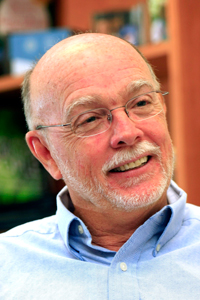 William Suk, Ph.D., M.P.H., Superfund Research Program, National Institute of Environmental Health Sciences (suk@niehs.nih.gov or 984-287-3325)
William Suk, Ph.D., M.P.H., Superfund Research Program, National Institute of Environmental Health Sciences (suk@niehs.nih.gov or 984-287-3325)
William Suk, Ph.D., M.P.H., is director of both the Superfund Research Program (SRP) and the Hazardous Substances Research Branch in the NIEHS Division of Extramural Research and Training. Suk has served as director of the SRP, a program established by Congress as part of the reauthorization of Superfund in 1986, since its inception. The SRP fosters interdisciplinary research approaches to address the problems associated with potentially hazardous environmental exposures. His affiliation with a number of organizations and committees include: Roundtable on Environmental Health Sciences, Research, and Medicine, Institute of Medicine, National Academy of Sciences; International Advisory Board of the Chulabhorn Research Institute, Bangkok, Thailand; and World Health Organization Consultation on Scientific Principles and Methodologies for Assessing Health Risks in Children Associated with Chemical Exposures. He is also a member of a number of trans-NIH committees. He received his Ph.D. in microbiology from the George Washington University Medical School, and his master's in public health in health policy from School of Public Health at the University of North Carolina at Chapel Hill.
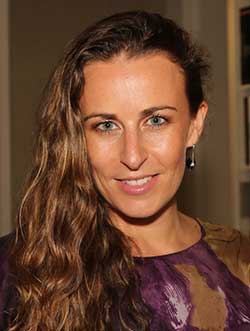 Nicole Kleinstreuer, Ph.D., National Toxicology Program Interagency Center for the Evaluation of Alternative Toxicological Methods (Nicole.kleinstreuer@nih.gov or 984-287-3150)
Nicole Kleinstreuer, Ph.D., National Toxicology Program Interagency Center for the Evaluation of Alternative Toxicological Methods (Nicole.kleinstreuer@nih.gov or 984-287-3150)
Nicole Kleinstreuer, Ph.D., focuses her research on mathematical and computational modeling of biological systems and their susceptibility to perturbations that result in adverse health outcomes. Kleinstreuer received B.S. degrees in mathematics and biomedical engineering from the University of North Carolina at Chapel Hill (UNC-CH), a Ph.D. in bioengineering from the University of Canterbury, and completed her postdoctoral training at the U.S. EPA National Center for Computational Toxicology. Prior to joining NIEHS, Kleinstreuer worked for Integrated Laboratory Systems, Inc., as director of the ILS computational toxicology group. She began her role as Deputy Director of the NTP Interagency Center for the Evaluation of Alternative Toxicological Methods (NICEATM) in early 2016, leading domestic and international efforts to develop novel testing and analysis strategies that provide more rapid, mechanistic, and human-relevant predictions of potential environmental chemical hazards. Kleinstreuer has a secondary appointment in the NIEHS Division of Intramural Research Biostatistics and Computational Biology Branch, and maintains adjunct faculty positions at the Eshelman School of Pharmacy at UNC-CH and the Yale University School of Public Health.
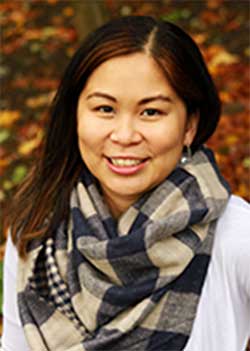 Lisa Truong, Ph.D., Oregon State University (Lisa.Truong@oregonstate.edu or 541-737-7091)
Lisa Truong, Ph.D., Oregon State University (Lisa.Truong@oregonstate.edu or 541-737-7091)
Lisa Truong, Ph.D., is an assistant professor in the Department of Environmental and Molecular Toxicology and the deputy director of the Sinnhuber Aquatic Research Laboratory at Oregon State University (OSU). Her research focuses on developing zebrafish assays to assess human health related diseases and new analysis tools for comparative data analysis. Her research goal is to build predictive toxicity models to aid in filling the data gaps.
Prior to joining OSU, Truong completed her post-doctoral training in computational toxicology with the U.S. Environmental Protection Agency - National Center for Computational Toxicology and L'Oreal Cosmetic under the mentorship of Drs. David Refi and Matt Martin. She received her B.S. in general sciences, and her M.S. in environmental sciences. She was a NIEHS Ruth Kirschstein Fellow while completing her Ph.D. in toxicology under the guidance of Robert Tanguay, Ph.D., at OSU.
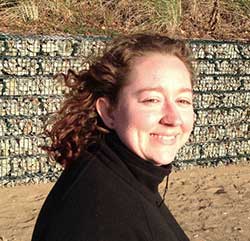 April Rodd, Ph.D., Brown University (April_Rodd@brown.edu or 401-863-1000)
April Rodd, Ph.D., Brown University (April_Rodd@brown.edu or 401-863-1000)
April Rodd, Ph.D., is a postdoctoral researcher at Brown University working in the laboratory of Jessica Plavicki, Ph.D. She completed her doctoral work in 2017 as part of the Brown University SRP Center working with Agnes Kane, Ph.D., on the development and application of in vitro alternative aquatic toxicity testing methods, including a fish liver microtissue created using three-dimensional cell culture techniques. She used these tools to study the toxicity of carbon nanomaterials, including how they impact the toxicity of aromatic hydrocarbons, and how the physicochemical properties of these nanomaterials could alter those toxicant interactions.
Her current research focuses on the developmental toxicity of per- and polyfluoroalkyl substances using zebrafish as a model. She is specifically interested on the impact of these emerging toxicants of concern on the neurovasculature and cells associated with the blood-brain barrier.
Moderator:
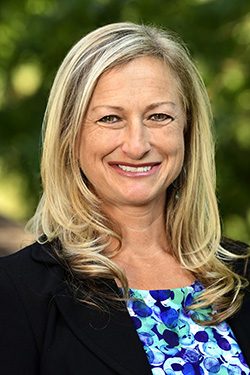 Heather F. Henry, Ph.D., Program Administrator, NIEHS Superfund Research Program (heather.henry@nih.gov)
Heather F. Henry, Ph.D., Program Administrator, NIEHS Superfund Research Program (heather.henry@nih.gov)
Heather Henry, Ph.D., is a health science administrator for the NIEHS where she oversees Superfund Research Program (SRP) grants that spans human health toxicology, risk assessment, detection technologies and remediation approaches. She provides guidance to potential applicants for SRP’s Multiproject Center Grants (P42s), Individual Research Grants (R01s), Small
Business / Technology Transfer Grants (R41-44; SBIR/STTR), and Conference Grants (R13). Heather studied plant-based environmental remediation
(phytoremediation) and ecological restoration as part of her doctoral work at the University of Cincinnati and as a Fulbright Postdoctoral Fellow at the University of Melbourne and University of Adelaide in Australia. She has been with NIEHS since 2006.
Webinar Slides and References:
- Slide Presentation for Nicole Kleinstreuer, Ph.D., National Toxicology Program Interagency Center for the Evaluation of Alternative Toxicological Methods:
- Slide Presentation for Lisa Truong, Ph.D., Oregon State University:
- Slide Presentation for April Rodd, Ph.D., Brown University:
Webinar Slides and References:
- Slide Presentation for Nicole Kleinstreuer, Ph.D., National Toxicology Program Interagency Center for the Evaluation of Alternative Toxicological Methods:
- Slide Presentation for Lisa Truong, Ph.D., Oregon State University:
- Slide Presentation for April Rodd, Ph.D., Brown University:
Additional Resources:
- NIEHS Superfund Research Program Risk e-Learning Webinar Series: New Approaches and Alternatives for Toxicity Testing
- A Strategic Roadmap for Establishing New Approaches to Evaluate the Safety of Chemicals and Medical Products in the United States
- NICEATM: Alternative Methods
- Automated zebrafish chorion removal and single embryo placement: optimizing throughput of zebrafish developmental toxicity screens
- Multidimensional in vivo hazard assessment using zebrafish
- Transgenerational inheritance of neurobehavioral and physiological deficits from developmental exposure to benzo[a]pyrene in zebrafish
- SRP Research Brief: New 3D Fish Liver Model for Aquatic Toxicology
- A 3D fish liver model for aquatic toxicology: Morphological changes and Cyp1a induction in PLHC-1 microtissues after repeated benzo(a)pyrene exposures
- Into the depths: Techniques for in vitro three-dimensional microtissue visualization
- Request for Data and Information on Technologies Used for Identifying Potential Developmental Toxicants
If you have a suggested topic or idea for a future CLU-IN internet seminar, please contact:
Technology Integration and Information Branch
PH: 202-566-0832 | Email: balent.jean@epa.gov
Technology Integration and Information Branch
PH: 202-566-0875 | Email: adam.michael@epa.gov





